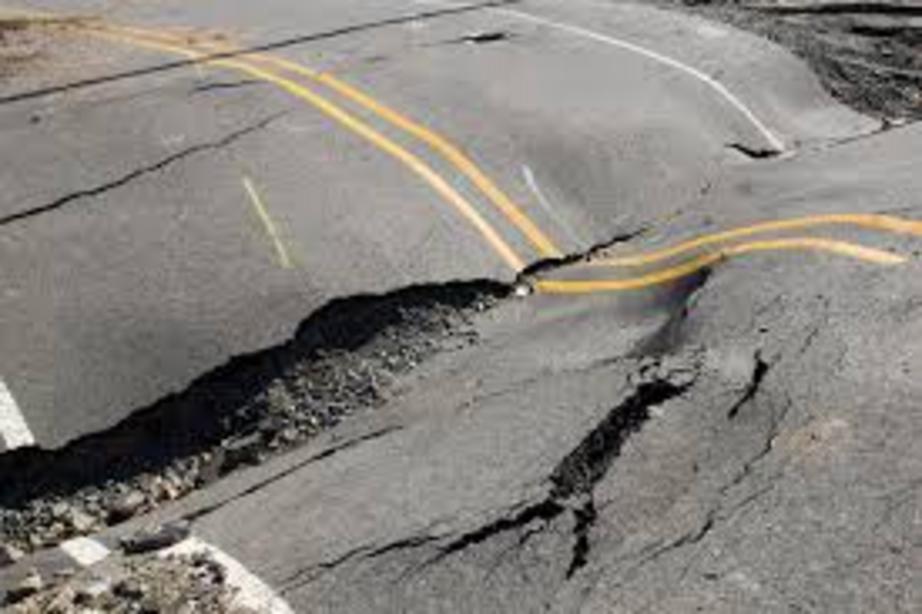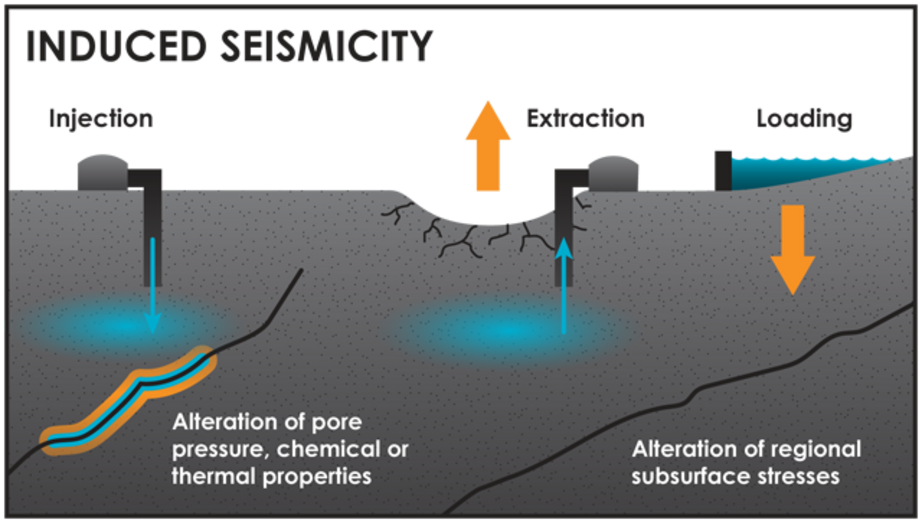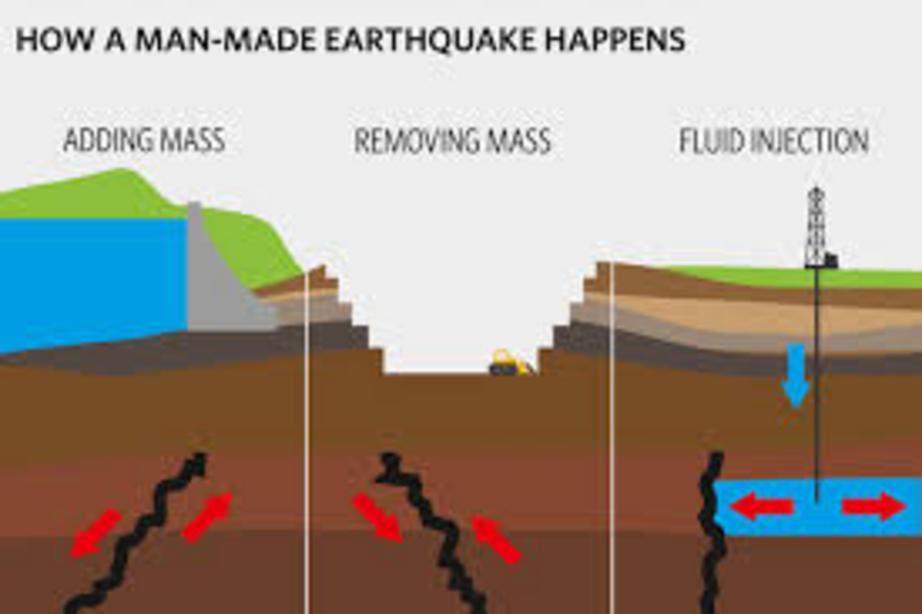How humans are causing deadly earthquakes
Mining, dam building, and fracking are among the causes.
Earthquakes are often thought of as largely unpredictable, wholly natural forces of nature—but that may be changing.
A study published in the journal Seismological Research Letters this week identified 730 sites where human activity caused earthquakes over the past 150 years. And while we've long known that people can influence seismic activity, researchers were surprised to find that human activity has induced earthquakes with magnitudes as high as 7.9—and that the number of earthquakes is clearly rising in some regions of the world.

Just like earthquakes caused by nature, human-induced earthquakes have the potential to be dangerous, even deadly. And geologists are only just beginning to understand the repercussions these quakes could have on people and the environment.
Here's what we know:
What kind of human activity causes earthquakes?

In addition to mine collapse, several other human-aided mechanisms can also induce seismicity, including elevated pore pressures and/or thermal and chemical changes due to fluid injection and subsequent migration; increased loading during reservoir impoundment; and alteration of subsurface stresses during the extraction of fluids like groundwater or hydrocarbons at a rate that causes subsidence and/or slippage. Credit: K. Cantner, AGI, after Ellsworth et al., Science, 2013.
The effects of human-induced earthquakes may be similar to those created by nature, but are often seen in regions with little or no previous seismic activity. Most natural earthquakes happen along fault lines, which are commonly (but not exclusively) found where tectonic plates converge. But earthquakes triggered by human activity can occur far from the edges of tectonic plates.
Exactly what causes each induced earthquake depends on the type of human activity.
According to the report's data, found on a publicly accessible database, mining accounted for the highest number of human-induced earthquakes worldwide (many earthquakes clustered around 271 sites). The removal of material from the earth can cause instability, leading to sudden collapses that trigger earthquakes.
Multiple earthquakes at 167 sites—and by far the deadliest ones—were triggered by what the report calls water reservoir impoundment, or dam building. (See the power of dams and dam removal.)
In 2008, an estimated 80,000 people died or went missing following a 7.9 earthquake in China's Sichuan province. Scientists believe it was triggered by the weight of 320 million tons of water that had been collected in the Zipingpu Reservoir—over a well-known fault line.
In the U.S., the conversation around human-induced earthquakes has largely centered around fracking for oil and natural gas, given the rapid spread of the technology in many states. According to the U.S. Geological Survey, fracking can induce seismic activity, both directly and from disposing of wastewater used in the process—the byproduct of water, sand, and chemicals used to hydraulically fracture hydrocarbons from rock. That high-pressure wastewater can crack rocks and lubricate faults.
In the study, the authors found 29 project sites where earthquakes were induced by fracking itself, 36 sites where quakes were induced by post-fracking wastewater disposal, and 12 sites with temblors induced by unspecific oil and gas wastewater disposal. (Learn more about fracking.) In the case of Oklahoma, which has experienced heavy fracking activity, hundreds of small earthquakes have been observed annually in a region that was previously more geologically quiet.
Earthquake triggers were also identified from nuclear explosions in 22 locations and two construction sites.
"All anthropogenic projects influence forces acting in the Earth’s crust," said Miles Wilson, a University of Durham geophysicist who collected the study's data. "For example, by adding or removing mass, so we shouldn’t be surprised that the Earth responds to these changes and that in some cases earthquakes are the response."
Why are they growing?

Wilson's compiled records of human-induced earthquakes date back a century and a half. The website allows visitors to search quakes by date or region or drill down into data like magnitude, location, and cause.
Users can also submit additional cases they believe should be added to the database.
The database includes 108 sites that have experienced human-induced earthquakes over the past decade, ranging in magnitude from relatively small events to as strong as 5.8. The majority of those quakes were in the U.S. and Canada and were caused by disposal of fracking waste into the ground.
"In the long term," Wilson said, "we may start to see more cases of induced seismicity across the world as we increase the number and scale of anthropogenic projects that influence the Earth."
Mining, too, is expected to increase in scale. Today's mines are bigger than ever and reach miles underground. All this activity could lead to more instability in the Earth, and more or larger earthquakes, Wilson warns.
Sometimes, "anthropogenic activity is the final straw that releases built-up stress," said the geophysicist.
What can we expect?
Wilson's work at the University of Durham was in part commissioned by a Dutch oil and gas company called Nederlandse Aardolie Maatschappij BV, which was interested in the potential impacts of its work. By better understanding earthquakes, engineers could work to minimize them, Wilson suggests.
It's unlikely people will stop digging into the Earth, or injecting wastewater, any time soon. But Wilson says we may be better prepared to avoid the worst disasters, like China's 2008 earthquake.
For the rest of this article please go to source link below.
Video can be accessed at source link below.
